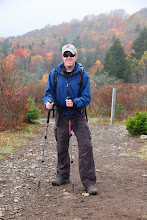The Journey

The process of mastering the outdoors takes from two to three years. It begins with the ordinary rank of Scout. One becomes a Scout after attaining the proper uniform – beige by today’s standards, olive drab in the decades past – memorizing the Scout Oath and Law, vowing to live by it every day, and attending a camp outing.
The rank of Tenderfoot follows. By this time, the Scout is becoming more experienced in the outdoors, learning to build fire, use knives and other sharp tools with which to cut wood. He is learning to set up a tent and prepare a meal with a camp stove. He is learning to survive in the biting cold by a mummy bag and layers of clothing. In the summer, he learns to keep himself hydrated in the boiling heat while biking up and down mountain trails. This process continues through Second and First Class. It typically takes two and half to three years to reach the First Class rank and only after a Scout has experienced a wide variety of camping experiences. A Scout ranked at First Class is considered beyond proficient in the outdoors, resourceful for their age, and independent in many areas.
Camp T. Brady Saunders, Virginia – July 2004
Trevor has only been a Boy Scout for three months, and he despises every aspect of it. The meetings are boring. He doesn’t know anyone in the troop. And camping is, quite frankly, miserable. Trevor has no father, only a mother who desperately wants him to make friends and mature into a responsible, knowledgeable young man.
“I just don’t like it, mom!” the eleven year-old complains every Monday night after the troop meeting. “Camping sucks.”
Trevor is shy and doesn’t make friends very easily. Skinny as a beanpole, he’s frail and awkward during outdoor activities. He lacks the self-confidence necessary to help him endure hardship on camping trips, but his mother knows that this is one of the ideals the Boy Scouts focus on. If he doesn’t give up, he’ll grow confident. It is not a prerequisite for joining the organization.
“Okay,” she says finally. “Promise me you’ll go to summer camp next month. Promise me you’ll just give it a try. If you still don’t like it, even after that, then I won’t make you keep doing it. If you want to after that, I’ll let you quit.” Trevor accepts the offer only after a large degree of pleading.
 The Journey
The JourneyThe rank of Star on a Boy Scout’s uniform denotes that he is self-assured, resilient, and familiar with being in a leadership position, such as Troop Guide or Senior Patrol Leader, whose duty is to oversee the Troop as a whole. Yet, a Star Scout is only beginning to understand the fundamentals of leadership. He is only beginning to grow comfortable in this new position, a position he still sees more suited for older men…adults. But he is becoming an adult, a man, whether he realizes it or not.
The rank of Life comes next and is one step away from Eagle. A Life Scout is in his prime, typically the leader of the troop and the go-to guy for serious problems amongst the younger Scout community. He assists in planning the camping outings, since the basic philosophy in the Boy Scouts of America is that the boys lead. He helps to train the younger boys, and he participates in the financial aspects of troop management. He sets a daily example by the way he lives his life, always doing his best to follow the Oath and Law. He is always prepared, as the Scout Motto stresses. He leads other Scouts in Patrol Leader Councils, their purpose in keeping the troop functioning as a whole. A life Scout is nearly at the end of his journey. Next is the final and most coveted rank in the Boy Scouts of America: Eagle Scout.










No comments:
Post a Comment